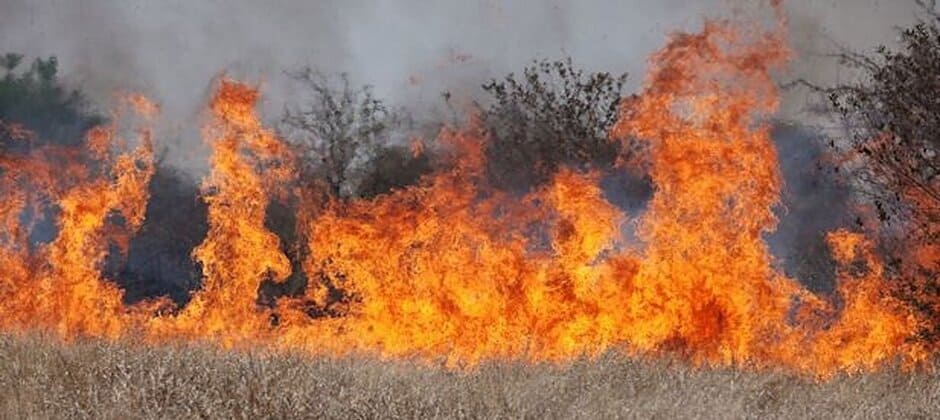Share this article
Lawmakers and agencies face escalating wildfires
The western United States is in the midst of an historic fire season that may surpass last year’s fire numbers.
Last year’s total of 60,000 mostly human-caused fires burning nearly ten million acres, according to the National Interagency Fire Council, has spurred new legislation to address the issue. In addition, agencies and others have issued reports aimed at getting ahead of the disturbing trend of increasingly severe fire seasons.
Wildfire is part of natural processes and can have regenerative effects on many ecosystems and habitats. However, large, intense wildfires can destroy habitat and the ecosystem’s ability to regenerate naturally. Severe wildfires can alter wildlife’s natural migration and movement patterns and kill animals caught in the fire’s path.
Earlier this month, the Senate Homeland Security and Governmental Affairs Committee approved legislation that will establish a new federal commission to study current wildfire policies and recommend policy changes. The Wildland Fire Mitigation and Management Commission Act of 2021 (S. 2150) calls for the new commission to be jointly managed by the Secretaries of Interior and Agriculture and the Administrator of the Federal Emergency Management Agency.
That 30-member commission, made up of both federal and non-federal members, will recommend policies to improve forest management tactics, federal spending and budgeting for wildland fires, and long-term management and land maintenance strategies, and will report to Congress regarding short- and long-term wildland fire prevention, mitigation, suppression, management and rehabilitation to avert future wildland fires from becoming catastrophic disasters.
The bill now goes to the full Senate for a vote. A companion bill has been introduced in the House of Representatives but has not been considered by the Natural Resources Committee.
Another bill introduced this year would increase logging on national forests in an effort to reduce wildfire risks, while other recent bills would focus on supporting restoration projects and increasing infrastructure that would allow communities to better respond to wildfire.
Earlier this year, the U.S. Geological Survey released a new five-year science strategy designed to help minimize fire’s detrimental impacts while allowing for its benefits. Developed by scientists and communication specialists at USGS and informed from interviews with 40 different stakeholder organizations, the Wildland Fire Science Strategic Plan helps define critical science needs and directions for the agency’s wildland fire research. Among other strategies, that plans call for developing tools to increase capabilities for assessing and predicting burn severity, allowing land managers to better predict effects on wildlife habitat and other ecosystem services.
The Nature Conservancy also recently released a report on wildfire, noting that in this decade, federal suppression costs alone have grown by nearly 400%, while funding for wildfire resilience have not increased. That report calls for a $5 billion to $6 billion in funding each year for the next 10 years, to reduce wildfire risks and develop needed infrastructure and adaptation.
The escalating fire season will be a high priority for the new chief of the U.S. Forest Service, who will take the post in late July when the current chief retires. The incoming chief, Randy Moore, is a career USFS employee who has spent 14 years as regional forester for the Pacific Southwest.
TWS members can read more about the effects of megafires on wildlife in the July/August issue of The Wildlife Professional.
Header Image:
Lawmakers and agencies are grappling with the effects of recent catastrophic wildfire seasons.
Credit: USDA/NRCS








